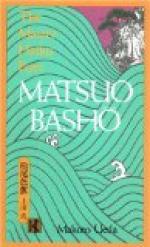|
This section contains 10,031 words (approx. 34 pages at 300 words per page) |

|
SOURCE: Introduction to Bashō: The Narrow Road to the Deep North and other Travel Sketches, translated by Nobuyuki Yuasa, Penguin Books, 1966, pp. 9-49.
In the essay below, Yuasa remarks on Bashō's genius, which lifted haiku above the efforts of his predecessors to the realm of perfect poetry. The critic goes on to discuss the travel sketches, in particular The Narrow Road to the Deep North, in which, Yuasa contends, Bashō is seeking a vision of eternity in the impermanent world.
Haiku, or hokku as it was called during the lifetime of Bashō, is the shortest among the traditionally accepted forms of Japanese poetry. It consists of seventeen syllables,1 divided into three sections of five-seven-five. For example,
Furuike ya, kawazu tobikomu, mizu no oto.
Breaking the silence Of an ancient pond, A frog jumped into water— A deep resonance.(2)
It is obvious, however, that it is not sufficient...
|
This section contains 10,031 words (approx. 34 pages at 300 words per page) |

|


